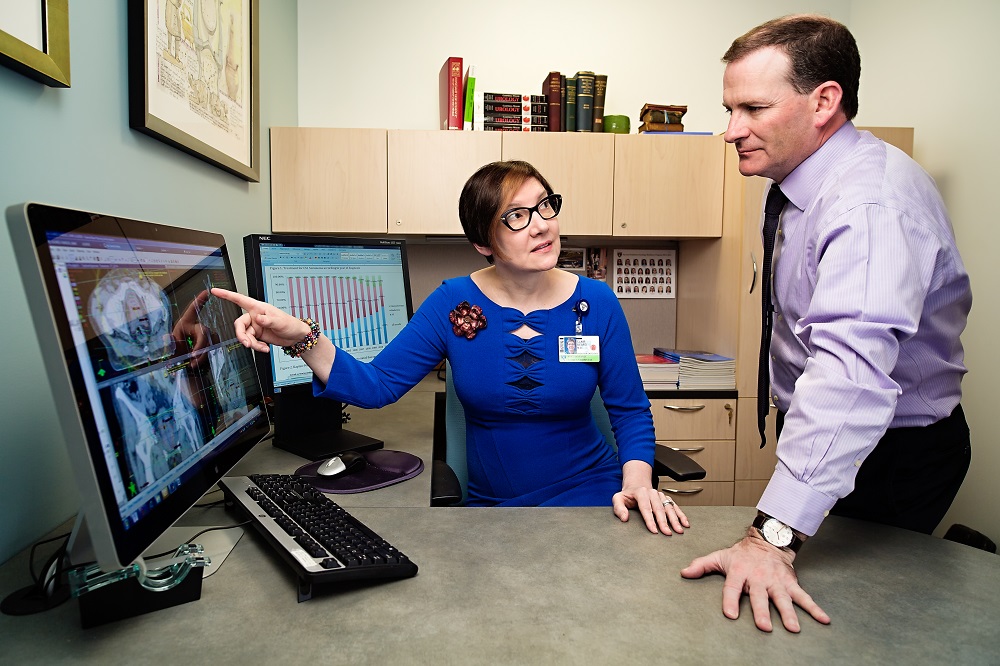Each year, approximately 8,000 men in the United States are diagnosed with testicular cancer. Testicular cancer occurs when abnormal cells in one or both of the testes begin to grow uncontrollably. It is highly treatable if caught early.
Here are some facts about testicular cancer that patients and their family members may not know.
Testicular cancer is the most common type of cancer for young men.

The incidence of testicular cancer starts to rise with the onset of puberty; it is the most common cancer in men between the ages of 15 and 40. Health history also plays a major role in determining who is most likely to develop testicular cancer. Risk factors include:
- Having had an undescended testicle
- Having had abnormal development of the testicles
- Personal history of testicular cancer
- Family history of testicular cancer (especially in a father or brother)
- Being white
Self exams are an important step in catching testicular cancer early.
The most common symptom of testicular cancer is a painless lump or swelling in the testicle. Regular testicular self-examinations can help identify these growths early, when the chance for successful treatment is highest. Other symptoms can include:
- A dull ache in the lower abdomen or the groin
- Sudden build-up of swelling in the scrotum
- Pain or discomfort in the testicle or scrotum
- Back pain
If you have any concerns about changes to your testicles, it is important to speak with your doctor as soon as you can. Nearly all patients with disease limited to the testicle are curable, many with surgery alone. The chance of cure goes down if the tumor has spread outside the testicle. In particular, adolescent boys often wait to see a doctor and should be encouraged to seek care earlier.
The most common first-line treatment for testicular cancer is surgery.
Surgery to remove the testicle (inguinal orchiectomy) cures most patients. Tumors that have spread to other places in the body may also be partly or entirely removed by surgery. After surgery, some patients may undergo chemotherapy or radiation treatment to kill any remaining cancer cells. Patients should continue close surveillance of abnormalities and regular self examination after treatment.
For alternative treatments, testicular cancer patients may consider a clinical trial.
Treatment for testicular cancer can affect fertility.
While men can maintain fertility with one testicle, if a man requires chemotherapy or radiation following surgery, his sperm count may be temporarily or permanently reduced. If a patient wants to have a child biologically, his doctor may recommend storing sperm in a sperm bank before starting chemotherapy or radiation. With the help of doctors and fertility experts, many patients can go on to have families after treatment.
Testicular cancer does not necessarily affect sexuality.
The vast majority of men with testicular cancer have it in only one testicle. After treatment, the remaining testicle produces all of the needed hormones that affect masculinity including hair growth, voice, and sex drive. The removal of a testicle does not affect the ability to have an erection.
For some men, the testicle is a symbol of manhood and missing one can cause emotional concerns that may affect sexuality. Adapting to life with one testicle can take some time, but sharing your concerns and insecurities with your partner can help.
Men who worry about their appearance after treatment can talk with their doctor about implanting a prosthetic testicle in the scrotum. In the rare instances where men have cancer in both testicles, they may take testosterone to maintain their sex drives and masculine attributes.
Dana-Farber encourages young men diagnosed with testicular cancer to seek support from our Young Adult Program, whose specialists can help them make difficult decisions concerning fertility and intimate relationships. Dana-Farber’s Sexual Health Program also helps individuals of all ages adjust to treatment-related changes in sexual health.
